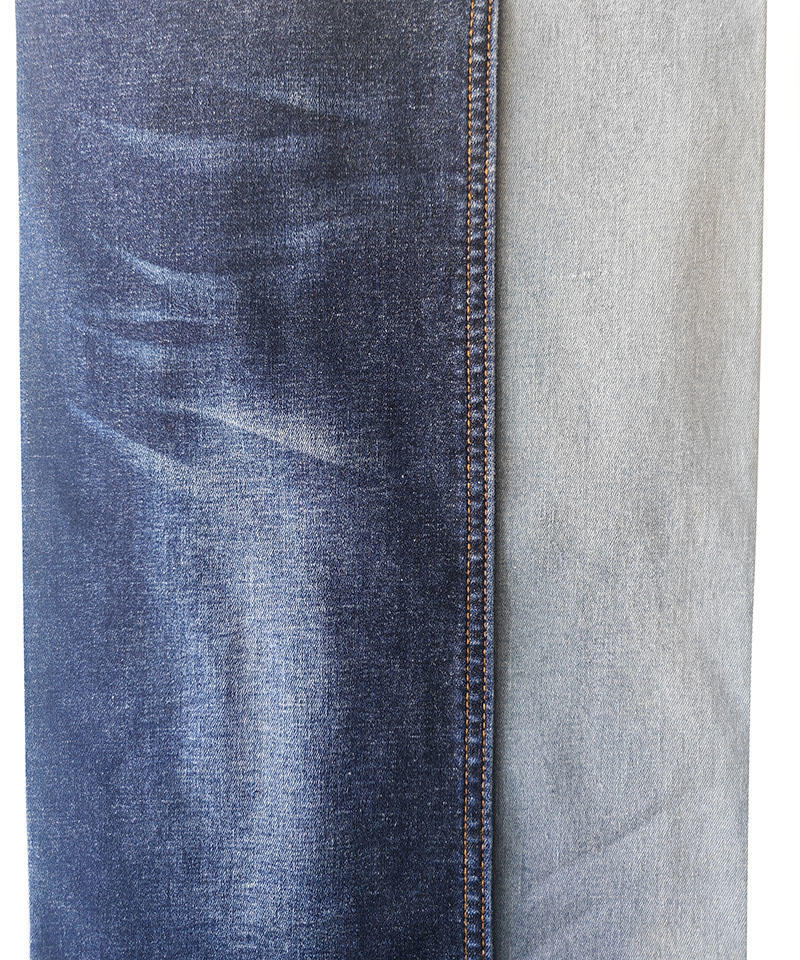Denim, as a classic and durable fabric, has gone through hundreds of years of development history. Traditional denim usually uses 100% cotton yarn, while Cotton Elastane Denim adds a small amount of spandex fiber to the cotton yarn to improve the elasticity and comfort of the fabric. As consumers' demand for wearing comfort and flexibility increases, Cotton Elastane Denim has gradually become the mainstream of the market.
2. Differences in raw material composition
Traditional denim is usually made of 100% cotton yarn. Cotton is a natural fiber with good air permeability and moisture absorption, but poor elasticity, easy to wrinkle, and more restrained when worn. The advantages of cotton fiber are natural, comfortable, and skin-friendly, but lack of elasticity, making traditional denim tougher and heavier.
Cotton Elastane Denim adds spandex fiber to traditional cotton yarn, and the proportion of spandex is usually between 1% and 3%. Spandex is an elastic fiber that provides extremely high stretch and resilience, giving the fabric superior elasticity. After adding spandex, Cotton Elastane Denim not only retains the natural comfort of cotton fibers, but also provides more freedom and comfort during wearing, especially suitable for consumers who need high elasticity and flexibility.
3. Differences in weaving processes
Yarn processing and weaving tension control
The yarn of traditional denim is mainly composed of a single cotton yarn, and the tension control during weaving is relatively simple, because cotton fibers do not have significant elasticity and the fabric structure is relatively stable. During the weaving process, producers can adjust the tension of the loom relatively easily to achieve a standard denim weaving effect. Most of the denim after weaving has a thicker feel, which is suitable for making work clothes or casual pants that are durable and not easy to deform.
For Cotton Elastane Denim, due to the addition of spandex fibers, more delicate control is required during weaving. The elasticity of spandex fibers means that the tension of the fabric will change with stretching, so the tension of the yarn must be precisely controlled during the weaving process to ensure the structural stability of the fabric. In terms of loom adjustment, Cotton Elastane Denim requires special settings to ensure that the spandex fibers are not overstretched and affect the resilience of the fabric. The addition of spandex may also cause changes in the density of the yarn, so when weaving, producers usually need to adjust the weft and warp density of the loom to ensure that the comfort and elasticity of the fabric reach the ideal level.
Differences in weaving structure
Traditional denim usually uses twill weave, which is characterized by alternating warp and weft yarns arranged in a diagonal shape, with strong wear resistance and unique visual effects. The classic blue color of denim is usually produced by combining this twill weave with indigo dye. The twill fabric density of traditional denim is usually high, and the fabric is relatively thick and upright, suitable for making products such as jackets and jeans.
In the weaving of Cotton Elastane Denim, although most products still use twill weave, the structure of the fabric requires higher precision due to the addition of spandex. In order to retain the elasticity of spandex, more air gaps are usually added during the weaving process, and the density of the fabric may be relatively low to increase the softness and stretchability of the fabric. Doing so helps to reduce the tightness of the fabric while maintaining the strength and elasticity of the fabric, and improves the comfort of wearing. Compared with traditional denim, Cotton Elastane Denim may use higher-precision mechanical equipment during weaving to ensure that the arrangement of the yarn is more uniform and dense, and finally obtain a fabric with better elasticity and comfort.
Weaving characteristics of spandex fiber
The addition of spandex fiber affects the structure and weaving characteristics of the yarn. The high elasticity of spandex makes the stretchability of the yarn likely to cause deviation of the fabric during the weaving process, so it is necessary to ensure the proper adjustment of the loom during weaving to avoid excessive stretching or knotting of spandex. During the weaving process, the stretchability and resilience of spandex fibers require more sophisticated loom settings to ensure that the elasticity and resilience of the fabric can be retained after the fabric is completed.
4. Differences in finishing processes
After the weaving process, finishing is a crucial step in the denim production process. The finishing process of traditional denim is relatively simple, usually including washing, bleaching, shaping and other processes to enhance the softness and comfort of the fabric.
The finishing process of Cotton Elastane Denim is more complicated. Due to the addition of spandex, special attention should be paid to the stability of spandex fibers during the finishing process. Common treatment methods include anti-stretching treatment and softening finishing to ensure that the elasticity of the fabric is not lost during the treatment process. In order to maintain elasticity, many manufacturers will choose to use mild detergents and low-temperature treatment to avoid deformation or damage to the spandex. In addition, in order to enhance the comfort and gloss of the fabric, Cotton Elastane Denim is often treated with special softeners to increase comfort while maintaining elasticity.



 English
English Español
Español















